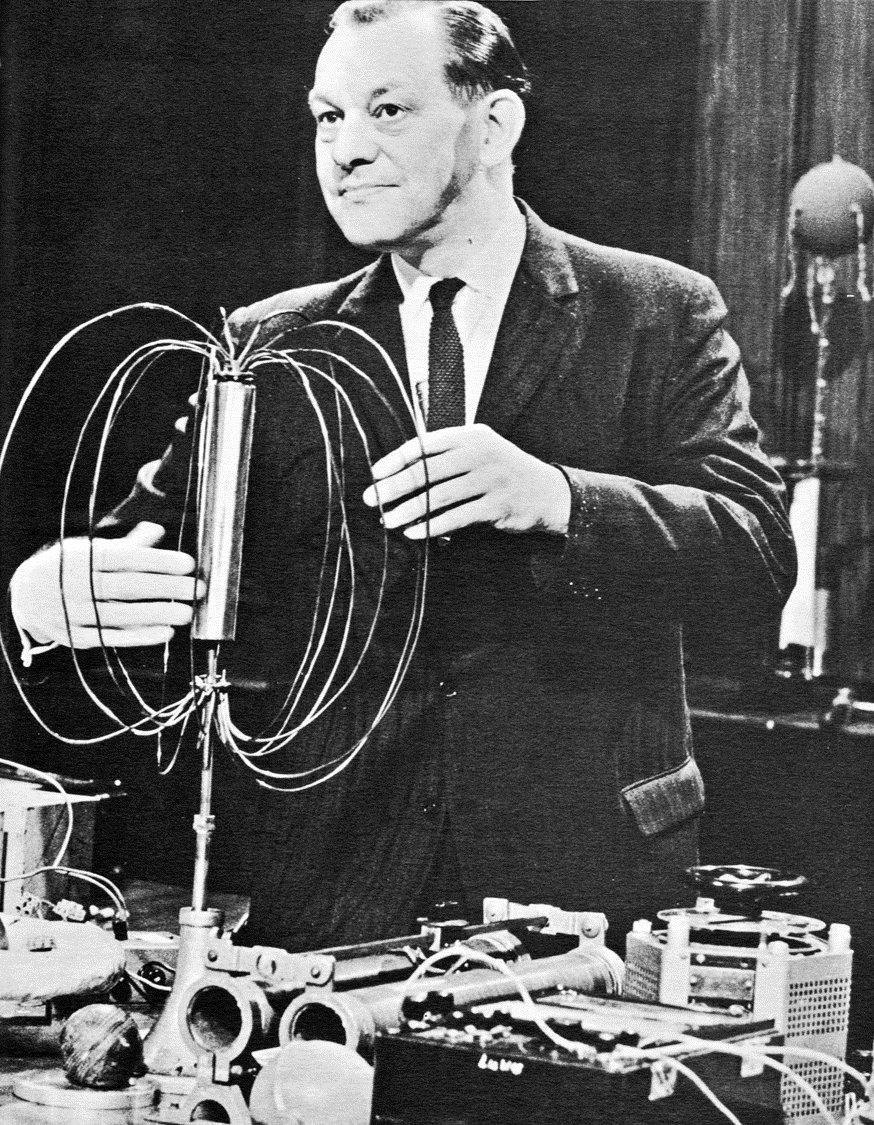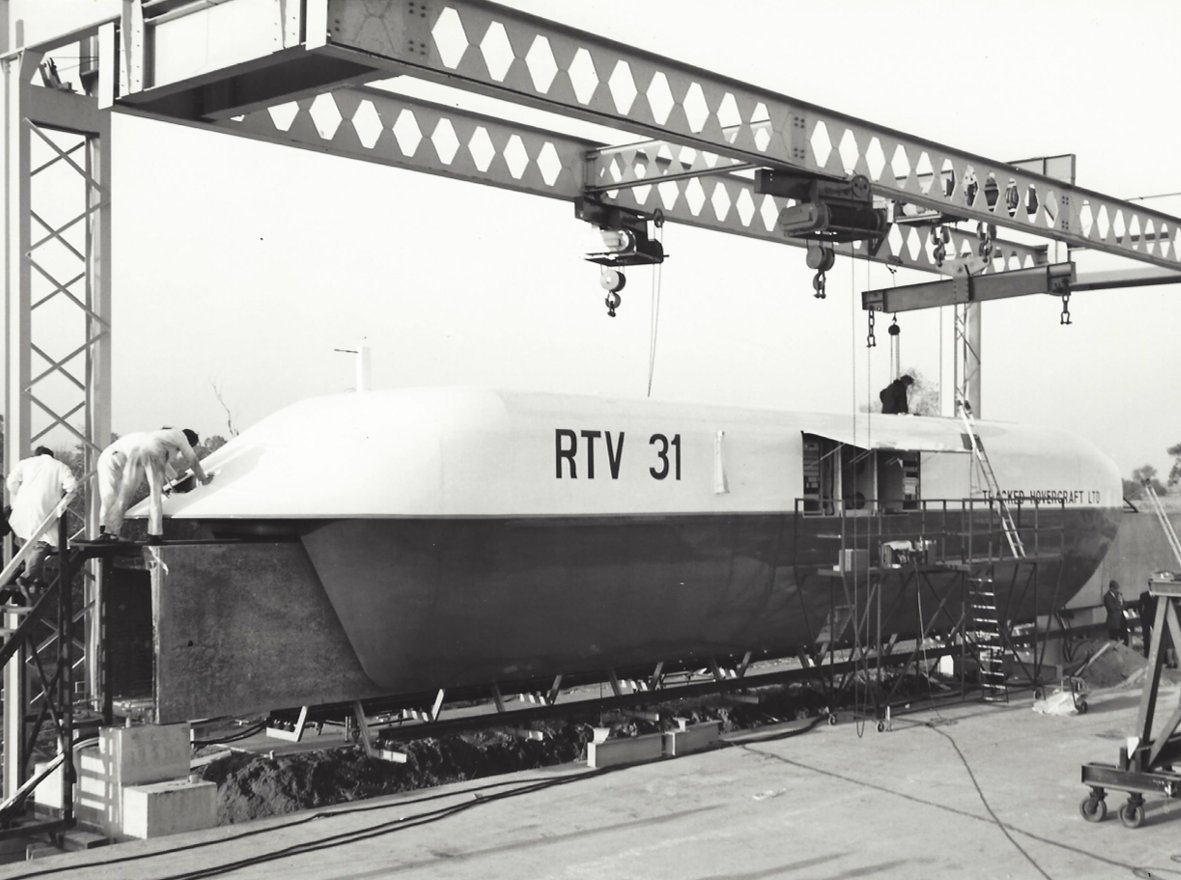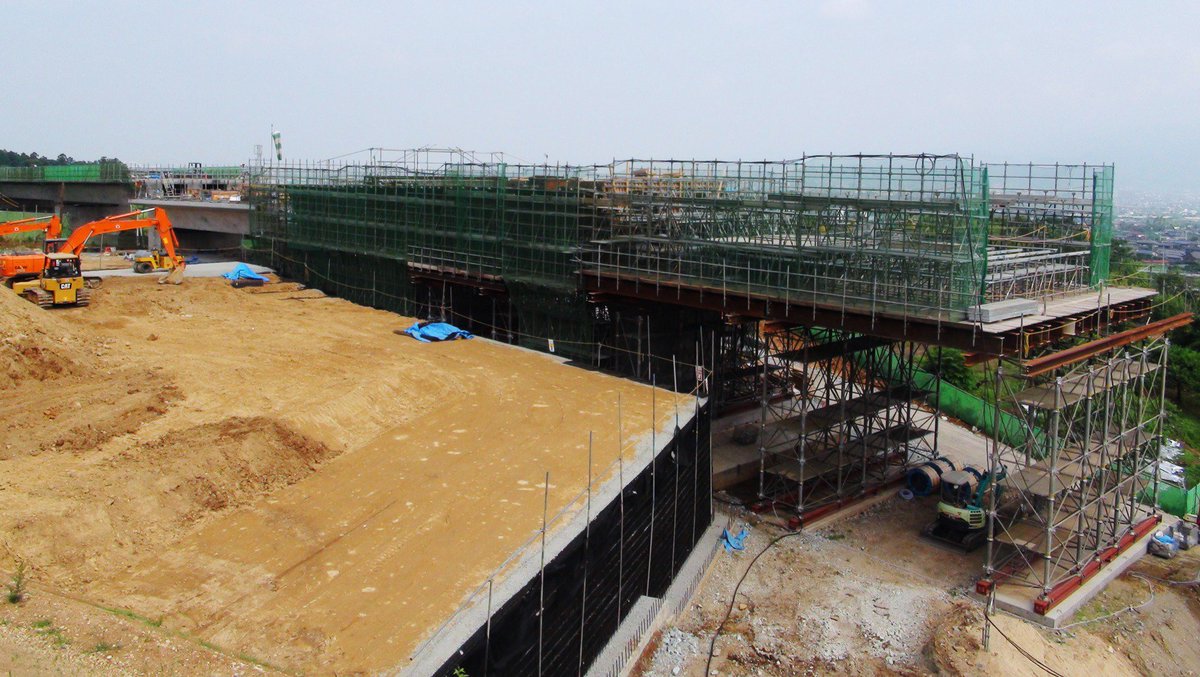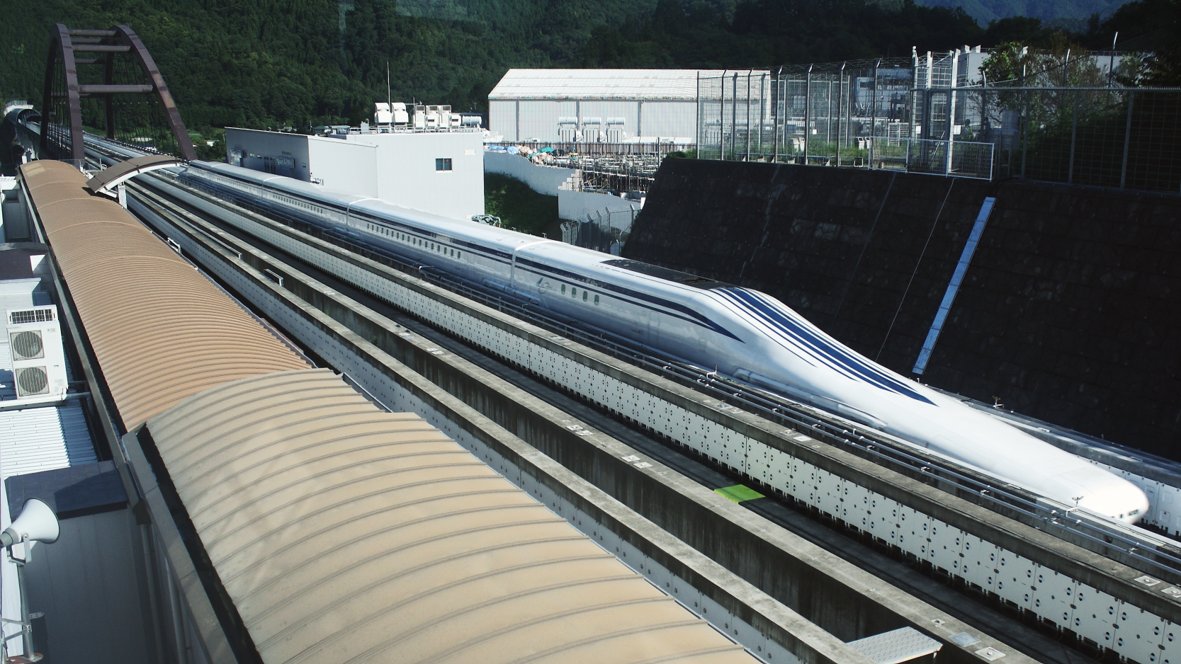I keep hammering on about Hyperloop being "re-hashed maglev" but what exactly is wrong with that?
While I'm at it... What even is maglev? Does it work? Where is it working?
If you don't fancy a documentary thread, look away now 🤓
While I'm at it... What even is maglev? Does it work? Where is it working?
If you don't fancy a documentary thread, look away now 🤓
https://x.com/GarethDennis/status/1012007152934965250
Before diving into a wee bit of the history, it is worth doing a technology recap... Maglev (magnetic levitation) in its most basic form is as simple as it sounds: when you hold two magnets of equivalent polarity against each other, they repel.
When you line up a load of magnets as a track, you end up with an arrangement that resembles an unwound motor, hence the technology that moves maglev trains about being referred to as the "linear motor". 

Anyway... Before any actual design went on, lots of patents were granted in all directions for infrastructure proposals that resembled maglev. The first actual use of the word "maglev" was in 1975, but similar ideas were patented as early as 1905. 





These were ideas on paper alone, though.
Whilst German engineer Hermann Kemper built a working model in 1935, the person who built the first full-size working linear motor in the late 1940s was the Lancashire-born electrical engineer, Professor Eric Laithwaite.
Whilst German engineer Hermann Kemper built a working model in 1935, the person who built the first full-size working linear motor in the late 1940s was the Lancashire-born electrical engineer, Professor Eric Laithwaite.

His linear induction motor (so called because the magnetic field induces eddy currents in the metal passing over it, thus creating a repelling force) was designed to permit high speeds and efficiencies.
Sciency bit:
Even British Rail were interested.en.wikipedia.org/wiki/Linear_in…
Sciency bit:
Even British Rail were interested.en.wikipedia.org/wiki/Linear_in…
At high speeds, the hunting motion of conventional steel wheels on steel rails increased rolling resistance and thus reduced energy efficiency.
Laithwaite, supported by BR, was convinced that his contactless LIM technology could solve this problem.
Laithwaite, supported by BR, was convinced that his contactless LIM technology could solve this problem.
Throughout the 1960s, he refined his LIM into a form called the "double-sided sandwich motor".
At around the same time, Hovercraft Development Ltd. were looking at a hovertrain concept. They called it the "Tracked Hovercraft" (). en.wikipedia.org/wiki/Tracked_H…
At around the same time, Hovercraft Development Ltd. were looking at a hovertrain concept. They called it the "Tracked Hovercraft" (). en.wikipedia.org/wiki/Tracked_H…

Never comfortable with putting all of their eggs in one basket, British Rail had also been researching improved suspension for high speed trains.
They determined that improvements to the design of "yaw dampers" largely eliminated the hunting effect on conventional rails.

They determined that improvements to the design of "yaw dampers" largely eliminated the hunting effect on conventional rails.


(This was absolutely brilliant work, by the way... The 1960s/70s truly were the glory days of rail boffinery.
British Rail Research Division's work gave us the railway we recognise today. The volume of study in transportation engineering has not yet been replicated.)



British Rail Research Division's work gave us the railway we recognise today. The volume of study in transportation engineering has not yet been replicated.)




Cracking this problem eroded maglev's energy efficiency advantage over conventional rail, making its benefits less clear.
With little justification for reconstructing huge tracts of their railway infrastructure to facilitate LIM technology, BR and Laithwaite parted ways in 1967.
With little justification for reconstructing huge tracts of their railway infrastructure to facilitate LIM technology, BR and Laithwaite parted ways in 1967.
This didn't stop him, though.
He joined forces with the Tracked Hovercraft team and (following some significant tinkering) helped RTV31 reach 167km/h on its test track in the Cambridgeshire fens. The date was 07/02/73.
He joined forces with the Tracked Hovercraft team and (following some significant tinkering) helped RTV31 reach 167km/h on its test track in the Cambridgeshire fens. The date was 07/02/73.
https://x.com/BBCArchive/status/758301544483651585
The trouble was, the same short-sightedness that prevented the UK from building its own conventional high speed network in the 1970s also precluded the construction of a hovertrain-capable one.
The week after its fabled test run, the Tracked Hovercraft project was cancelled.
The week after its fabled test run, the Tracked Hovercraft project was cancelled.

Laithwaite later admitted that the "hovertrain" concept was flawed and that he preferred a "maglev" arrangement (as it had now been coined).
There are a few scattered remains of the original test track, and RTV31 has been lovingly restored at @Railworld:
There are a few scattered remains of the original test track, and RTV31 has been lovingly restored at @Railworld:
https://x.com/GarethDennis/status/1011910034010173440
British Rail hadn't entirely abandoned their interest in the LIM, and collaborated with Laithwaite again to open the first commercially operational maglev line at Birmingham Airport in 1984.
It was called "MAGLEV" and was a bit unreliable. Eventually it was replaced.
It was called "MAGLEV" and was a bit unreliable. Eventually it was replaced.

MAGLEV's speed could be described as "pedestrian" at best... For the first true high speed maglev (not just LIM) system, we must head over to Germany.
Enter: Krauss-Maffei's Transrapid.

Enter: Krauss-Maffei's Transrapid.


Back in 1969, the first Transrapid prototype was tested on a 600mm long table-top track. 1971 brought a full-scale demonstrator in the form of Transrapid 02 and Transrapid 04 broke 250km/h in 1973. Transrapid 05 was being tested on a semi-permanent track in 1979. 





By the time Birmingham Airport's MAGLEV opened in 1984, the Transrapid Test Facility in Emsland was operating and Transrapid 06 had been publicly exhibited.
At this point everything slowed down (if you ignore the system pushing through the 400km/h and 450mk/h barriers that is).

At this point everything slowed down (if you ignore the system pushing through the 400km/h and 450mk/h barriers that is).


p.s. During this period Berlin's M-Bahn (a metro-style LIM system on wheels) appeared. It then almost immediately disappeared again. That's pretty much all there is to say about that. The politics is more interesting than the line itself, and it isn't pure maglev so 🤷♂️ 



Where were we? Oh yeah: communist China.
China's government had been planning a high speed rail network since the late 1970s, but only in December 1990 did they manage to submit the first actual proposal.
This was for a new line between Beijing and Shanghai.

China's government had been planning a high speed rail network since the late 1970s, but only in December 1990 did they manage to submit the first actual proposal.
This was for a new line between Beijing and Shanghai.


The trouble was (and there's a lesson here), the Chinese government couldn't make up its mind between using conventional rail technology or maglev.
Experts agreed that conventional technology made the most sense, but successive officials queried this conclusion.
Experts agreed that conventional technology made the most sense, but successive officials queried this conclusion.

The debate raged on for ten years until, in 2000, a very big bone was thrown to maglev's proponents by the Shanghai Municipal Government... They would part-fund construction of a new Transrapid line to link the city to Pudong airport.
The Germans had found their first buyers.
The Germans had found their first buyers.

The Shanghai Maglev Train became the world's first high speed passenger maglev service when the first paying customer stepped aboard in 2004.
Operating at up to 430km/h, it is the fastest commercial railway in the world. It has also been a colossal failure.
Operating at up to 430km/h, it is the fastest commercial railway in the world. It has also been a colossal failure.

Built as an off-the-shelf proving ground for the tech, it was expected that a cascade of orders from Germany and the rest of the world would follow... Transrapid's German backers provided a significant proportion of the total costs and the German government got involved too. 

Yet its substantial cost, minimal capacity and wranglings over technology transfer killed it stone dead.
The success of the trial Qinhuangdao to Shenyang line proved the superiority of conventional high speed rail, and the Chinese authorities proceeded to build 25000km of it.



The success of the trial Qinhuangdao to Shenyang line proved the superiority of conventional high speed rail, and the Chinese authorities proceeded to build 25000km of it.




Things went from bad to worse for Transrapid.
In 2006 during a routine test run, Transrapid 08 collided with a maintenance vehicle at speed near Lathen, killing and severely injuring 33 people.
In 2006 during a routine test run, Transrapid 08 collided with a maintenance vehicle at speed near Lathen, killing and severely injuring 33 people.
The Emsland test track was demolished in 2012. Transrapid was all but wound-up.
This isn't the end of the story, though... We haven't mentioned Japan yet.
This isn't the end of the story, though... We haven't mentioned Japan yet.

Let's jump back to the 1960s.
Japan started operating its world-renowned bullet trains in 1964, but even before opening (and proving highly successful) they had resolved to go even faster.
Japan started operating its world-renowned bullet trains in 1964, but even before opening (and proving highly successful) they had resolved to go even faster.

Between 1962 and 1969, the Japanese National Railways attempted to create their own linear motor railway to do precisely that.
Immediately after a patent for a new type of maglev was patented in the US, they succeeded (I'm not drawing any conclusions here)...



Immediately after a patent for a new type of maglev was patented in the US, they succeeded (I'm not drawing any conclusions here)...




Unlike Laithwaite or Transrapid's systems which relied on a "track", the Japanese used superconducting electromagnets for levitation and propulsion within a guideway.
The first trial run was in 1972; in 1980 the familiar U-shaped guideway appeared.
Chūō Shinkansen had arrived.
The first trial run was in 1972; in 1980 the familiar U-shaped guideway appeared.
Chūō Shinkansen had arrived.

In 1997 a new test track opened in Yamanashi on the route of a future line between Tokyo and Osaka. This thing was fast.
Passengers on test trains have ridden on trains at over 500km/h and the L0 series train has clocked a staggering 603km/h. Woah.
Passengers on test trains have ridden on trains at over 500km/h and the L0 series train has clocked a staggering 603km/h. Woah.
The trouble is, the operating speed of 505km/h requires a very straight alignment. 90% of the new line will be built in tunnels, and this isn't cheap. Neither are the track or trains.
In fact, the line is expected to cost €75m/km. That's more expensive than @Crossrail.

In fact, the line is expected to cost €75m/km. That's more expensive than @Crossrail.


With the development process having been so inordinately pricey, the Japanese government has to build something to show for it. And build it they shall: the final line between Tokyo and Osaka will hopefully open in 2037, a whopping 47 years after construction started. 

There are two footnotes in this story, and we stay in Japan for the first... Linimo (or the Aichi High-Speed Transit Tobu Kyuryo Line) opened in 2005 to serve an exhibition and was left in-situ.
Despite its lightweight design, it still cost €56m/km and remains a loss-maker.
Despite its lightweight design, it still cost €56m/km and remains a loss-maker.

The fifth (and likely penultimate) commercial maglev operation is South Korea's Incheon Airport Maglev, which opened in 2016 (again, started as a test track in 2006).
This line has found some success (partly because it is free) and there are plans for its expansion.

This line has found some success (partly because it is free) and there are plans for its expansion.


Both of these lines are isolated, metro-style operations and their technology is more closely related to Laithwaite's original LIM than the superconducting guideway of Chūō Shinkansen. They operate at around 100km/h, and have capacities similar to a modern LRT system. 

Anyway, this gives us the full complement of commercial maglev:
❌Birmingham MAGLEV (replaced)
❌Berlin M-Bahn (replaced)
🔻Shanghai Transrapid (white elephant)
🔻Japan's Linimo (loss-making)
✔️Incheon Airport Maglev (doing okay)
❔Chūō Shinkansen (still under construction)
❌Birmingham MAGLEV (replaced)
❌Berlin M-Bahn (replaced)
🔻Shanghai Transrapid (white elephant)
🔻Japan's Linimo (loss-making)
✔️Incheon Airport Maglev (doing okay)
❔Chūō Shinkansen (still under construction)
Not a great, ahem, track record...
To round things up:
Maglev railways are more expensive and less energy efficient than their steel-on-steel equivalents, and in spite of over fifty years of tests and trials there is still no dedicated maglev inter-city line.
To round things up:
Maglev railways are more expensive and less energy efficient than their steel-on-steel equivalents, and in spite of over fifty years of tests and trials there is still no dedicated maglev inter-city line.
Hyperloop is just the latest iteration of this technology, and given all of this experience of failure, is it worth yet more wasted human effort?
That is for you to decide!
That is for you to decide!
https://x.com/GarethDennis/status/1016764981596098561
And what of Professor Laithwaite, the father of maglev?
After tinkering with gyroscopes and moths (yes!) he ended up working with @NASA on using LIM technology to launch stuff into space. In 1997 at age 77, he collapsed in his lab and never woke up.
independent.co.uk/news/obituarie…
After tinkering with gyroscopes and moths (yes!) he ended up working with @NASA on using LIM technology to launch stuff into space. In 1997 at age 77, he collapsed in his lab and never woke up.
independent.co.uk/news/obituarie…
The story of maglev is a fascinating and (at times) tragic one, but it also contains lots of lessons for scientists, engineers, economists and entrepreneurs.
In transport as much as in all walks of like, as we look to the future it is always worth keeping one eye on the past.
In transport as much as in all walks of like, as we look to the future it is always worth keeping one eye on the past.
Credit to Dave Coxon for the photos of the British Rail Research Division in action. Everything else is from Wikipedia. US patent extracts can be found at: patents.google.com
This Dave Coxon!
https://x.com/GarethDennis/status/996519060786569216
*design (even the old proof read wasn't good enough to spot that)
dang it *km/h
Some great proof reading went on here.
I converted this thread into video form, if that's your thing...
https://x.com/GarethDennis/status/1247976984153600001?s=19
...and do feel free to support me on Patreon at if you enjoyed any or all of this!patreon.com/garethdennis
• • •
Missing some Tweet in this thread? You can try to
force a refresh













